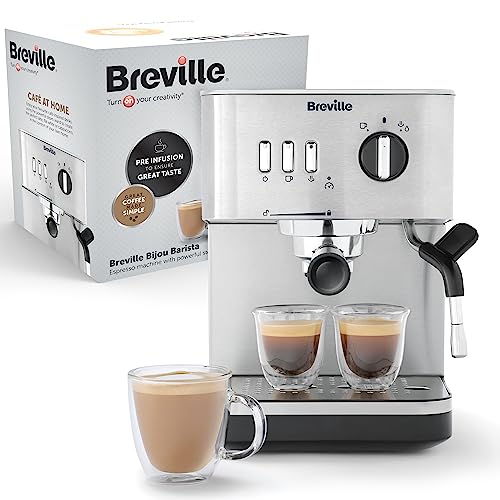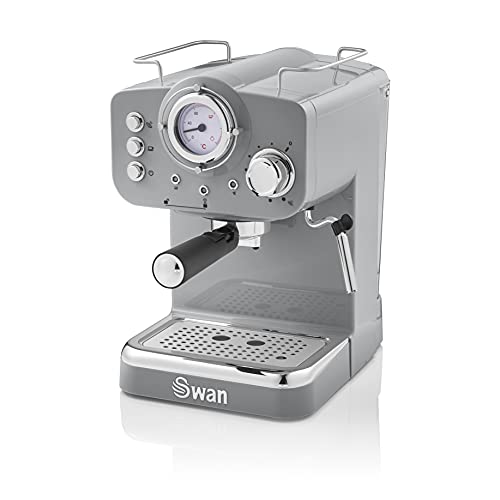9 Things Your Parents Taught You About Machine Espresso
페이지 정보
Christoper 작성일25-02-08 04:26본문
 How Does Machine Espresso Work?
How Does Machine Espresso Work?Machine espresso utilizes precise pressure and mind-blowing filter technology to create the delicious coffee we enjoy. How exactly does it work?
To make an espresso, hot water is forced under high pressure through finely ground coffee. The process is similar to that of making drip coffee. However the pressure is the primary difference.
The Head of the Group
The name implies, the group head is where you place your portafilter when brewing espresso. It is responsible for dispersing the water into the portafilter before controlling the pressure of the resulting extraction. There are many different types of group heads each with their own advantages and drawbacks. Some focus on temperature stability, some on pre-infusion options, and others are designed to control the lever. Some are a combination, such as the E61. This is a favorite among baristas since it provides multiple advantages in one package.
As you can see from the image above, the group head has a number of notches. The portafilter is placed inside these notches, and then twist the head to secure it. There is also a rubber gasket that is a part of the notches to help create the seal when you insert your portafilter into the machine. The notches on the head allow for a precise position of the portafilter which is essential to ensure a consistent extraction.
The group head does not just allow you to place your portafilter easily however, it also keeps an even temperature. This is done by cycling hot water around the portafilter and through the brew-basket, making sure that the temperature is always at the right level for extraction. It is important to remember that even a slight difference can make the difference between a great and a excellent espresso.
The Pump
Unlike manual piston machines, that use a lever to pressurize water, the rotary espresso machines use motorized pumps that provide the nine atmospheric bars of pressure that are required for espresso extraction. The pressure is created by pumping water through a heat-exchanger and then through the ground coffee.
Pumps are typically less expensive and last for longer than piston-driven machines. However, both kinds of machines may degrade because of frequent use and poor cleaning. They also increase the complexity of mechanical systems which can result in costly prices for even the most basic models.
Some espresso machines can eliminate the pump completely and employ steam pressure to create espresso. The drawback of this is that the boiler that produces steam also increases the temperature of water until it reaches boiling which could lead to excessive extraction. The machines must also constantly rebuild their pressure between cups. This takes energy and time.
A large majority of espresso machines employ an rotary or Machine Espresso a vibration pump. A vibration model uses a rotating disk to generate pressure, while a ros of the coffee from hot water. The filter is also a vital element of the temperature control system, because it stops the machine from overheating.
It also helps with flavor, as a filter lets you enjoy a longer bloom phase. This allows the beans to let their nuances out, and improves extraction.
It is important to keep in mind that even the best filter can make a bad cup of coffee. The quality of the beans, and the extraction, are still very important.
This is where the magic happens. It's what makes espresso taste great. The grouphead (also called the brewhead) is where you place the portafilter, the thingy that you use to put the grounds of coffee into while making espresso.
In the steam-driven espresso machine hot water is heated in an airtight container to create steam, which is then pushed through the grounds with high end espresso machine pressure. These kinds of machines are typically less expensive and easier to maintain than pump-driven models. However, they are limited in their capacity to create the ideal conditions for brewing as they only operate at 1-1.5 bars of pressure. While the perfect shot requires 9-10 bars.
 In recent years, espresso machines powered by a compressed air pump have become increasingly popular. They utilize an air compressor to force hot water through the ground and are much more mobile than electric steam-driven espresso machines.
In recent years, espresso machines powered by a compressed air pump have become increasingly popular. They utilize an air compressor to force hot water through the ground and are much more mobile than electric steam-driven espresso machines.댓글목록
등록된 댓글이 없습니다.

















